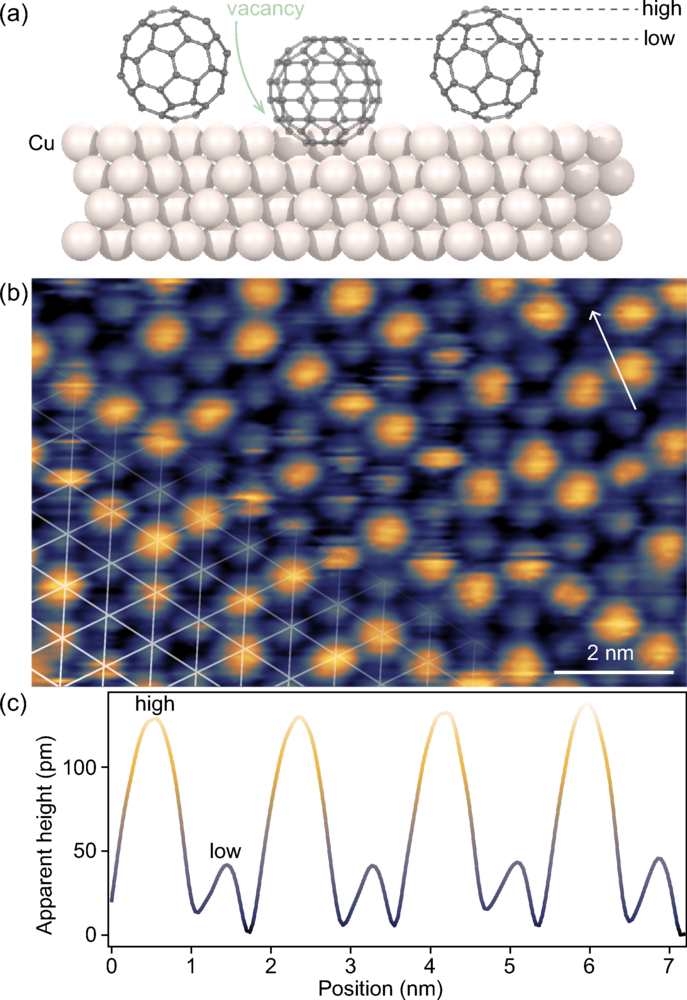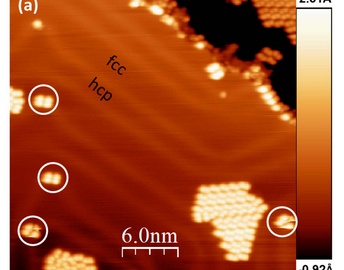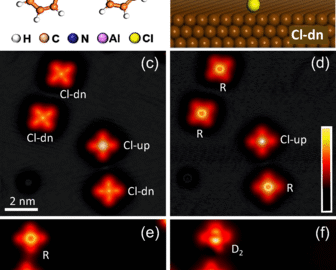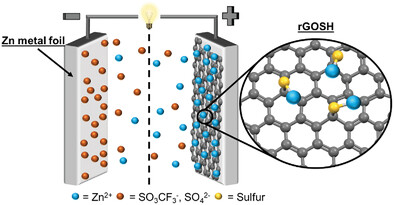publications
Describing stripelike corrugation patterns in C60 monolayers grown on Cu(111) using a frustrated spin Hamiltonian
In the submonolayer regime, fullerene molecules tend to form compact islands on dense-packed metal surfaces. On Cu(111), these islands exhibit various types of corrugation patterns caused by a compressive epitaxial stress and an atomic-scale reconstruction of the metal surface. Following a strategy we introduced in a previous study [Phys. Rev. Lett. 131, 186201 (2023)], we use scanning tunneling microscopy to study molecule-molecule correlations in stripelike corrugation patterns that develop in C60 islands. Overall, these correlations are well described by a frustrated on-lattice Ising spin Hamiltonian that includes spin-spin interactions up to the third-nearest neighbor. Careful comparison between the measured and computed correlations allows us to distinguish molecular islands that exhibit a corrugation pattern typical of an equilibrated spin configuration from those that appear nonequilibrated. The statistical analysis performed both in real and reciprocal space confirms the relevance of using a frustrated spin Hamiltonian to characterize nontrivial molecular arrangements on surfaces.
M. Alfonso-Moro, V. Guisset, P. David, J. Coraux, and N. Rougemaille, Phys. Rev. B, 112, 054431, DOI: https://doi.org/10.1103/4tdp-mhs9
Comments are closed







